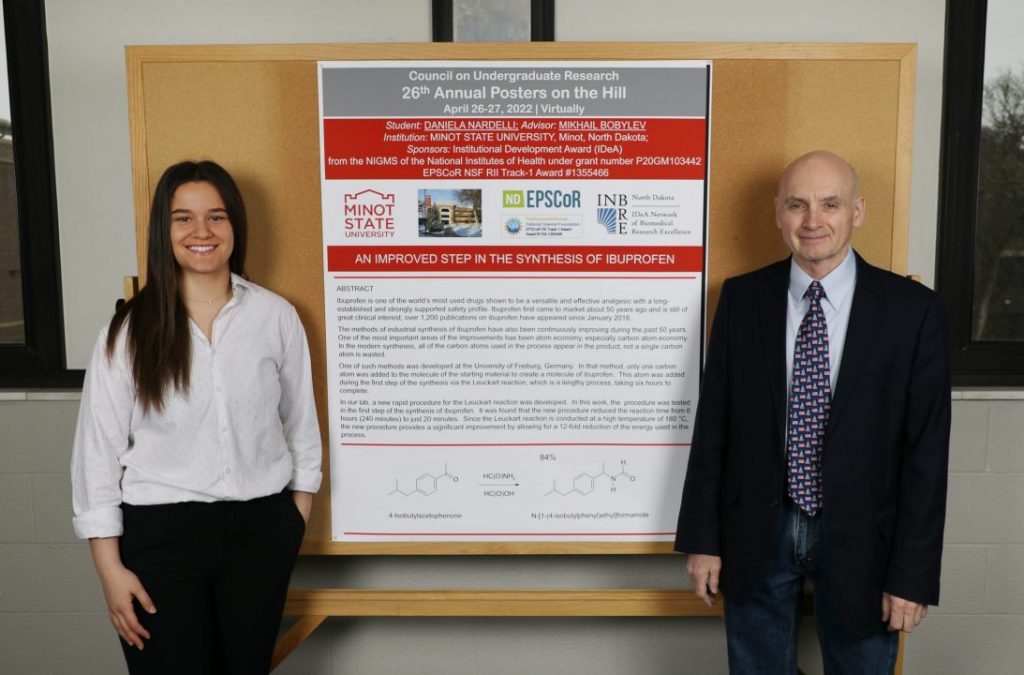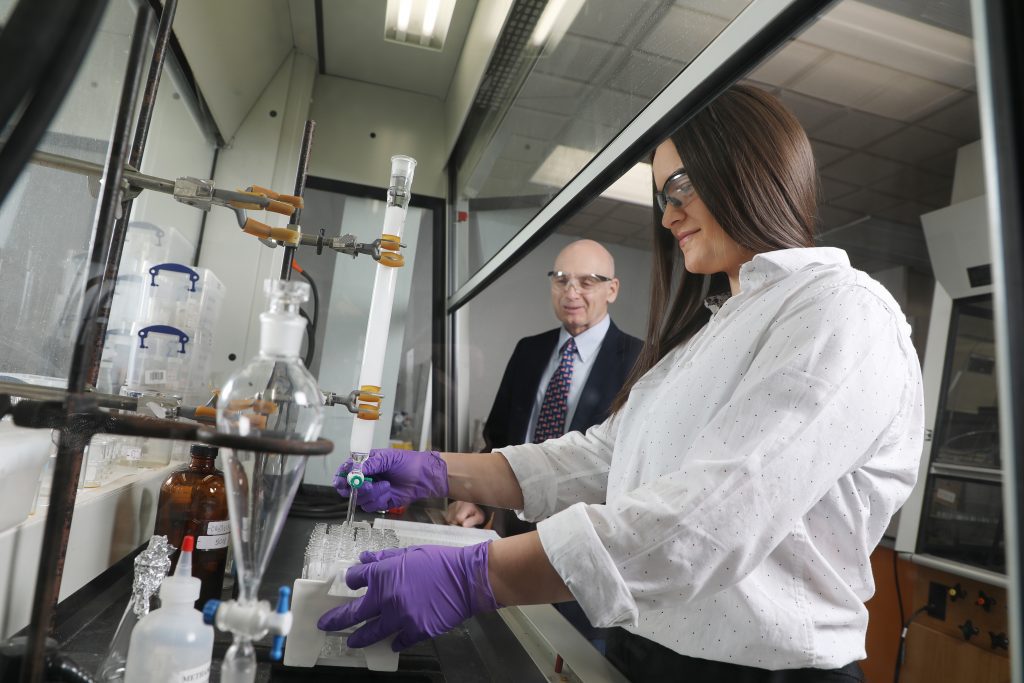

MINOT — Mikhail Bobylev has a history of his organic chemistry students being selected for Posters on the Hill.
Posters on the Hill is an annual event hosted by the Council on Undergraduate Research to “highlight the work of undergraduate researchers from around the country to Members of Congress, congressional staffers, federal government officials, academics, and others, demonstrating the value of federal investment in undergraduate research. The event is highly selective — several hundred applications are received each year and judged by a national panel of experts in their fields, and only the best teams are chosen.”
Since 2009, researchers under Bobylev's tutelage have been selected for the event 10 times, and today those students are doctors, pharmacists, clinical scientists, and graduate students at prestigious universities.
“Posters on the Hill is a life-changing event for many of my students. For example, one of them, Kowan O’Keefe, ’15, was planning to have a career solely in chemistry until he came to Washington D.C.,” Bobylev said. “He saw the machinery of how politics works, he met with senators and congressmen, and decided to go into politics. He now brings science and politics together, which is very important, and is pursuing his Ph.D. at the University of Maryland School of Public Policy.”
North Dakota IDeA Networks of Biomedical Research Excellence (ND INBRE) and North Dakota Established Program to Stimulate Competitive Research (ND EPSCoR) provide funding for Bobylev and his students to conduct their research.
Daniela Nardelli, who is slated to graduate May 2023, is the latest Minot State student to present at the prestigious event. She was one of 60 participants, selected from hundreds of applications.

“What we have been working on is one step of the synthesis of ibuprofen medicine,” said Nardelli. “There are several different ways to produce ibuprofen, and we focused on one step of a specific reaction that was developed in Germany. This first step of their reaction is really slow, it takes over six hours to complete. We applied a method Dr. Bobylev developed a few years back here at Minot State and realized we could cut down the time to like 20 minutes instead.”
“As we talk about chemistry becoming more and more green, this synthesis was first introduced over 30 years ago. One of the directions of making an improvement is to introduce what is called carbon atom economy. In this case, only one carbon atom was introduced,” explained Bobylev. “A second reason this is green is that you’re saving energy. This is important, of course, because it’s a high temperature reaction going at about 180 degrees Celsius. If you compare the length of time, if something takes 20 minutes instead of six hours, you use 12 times less energy.
When Nardelli began working in Bobylev’s lab, she didn’t realize the potential impact their discovery could make.
“To be honest, at first I had no idea what I was doing. Now that I’m getting into it and learning more of what we’re actually doing, it’s amazing,” Nardelli said. “I never realized there’s so much chemistry behind health and medicine, which is the reason I came to Minot State in the first place. Everything is connected.”
Nardelli said she originally chose the University for two reasons: soccer and science.
After sending high school soccer highlights across the United States, the center back offender began narrowing down offers, ultimately selecting Minot State for the science program’s reputation, size, and community.
“I love the opportunity I’ve had with small classes,” the Arco, Italy biology and chemistry major said. “I’m able to interact with professors and get to know them — and they get to know us — on a personal level. When I first got here, I really thought I wanted to go to either medical or physical therapy school after getting a degree in biology. But through my years here, I’ve learned that there’s so much more that I might be interested in.”